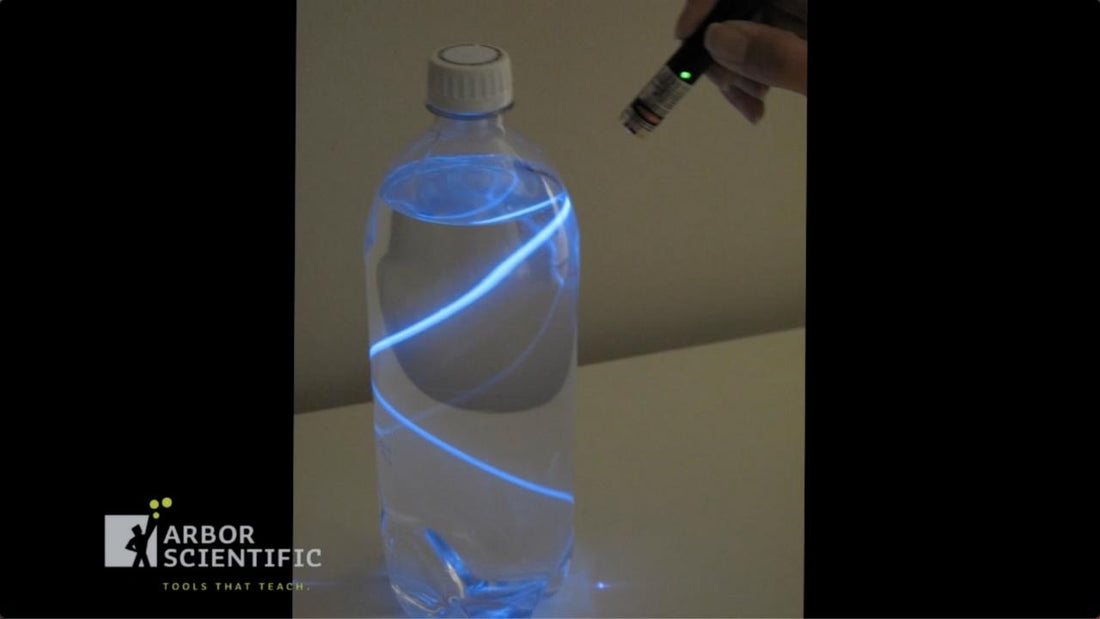If you are talking about optics in the classroom and students are learning about how light waves behave, take a look at the blue-violet laser, which produces wavelengths at 405 nm.
Featured Products
Cool Stuff Demos with Violet Lasers
"I definitely want one of those blue LASERS! Ahhhh… to write my name on a phosphorescent board the FIRST day of class in the dark from the back of the room. That WILL get their attention!" -Buzz Putnam
Arbor Scientific has carefully screened all of our Lasers to make sure they offer a higher level of safety and peace of mind. There are low-cost versions available on the market today that could pose serious risk to your students due to a lack of infrared (IR) filters. Even pointers that use IR filtering could still be harmful, due to shoddy manufacturing that provides poor conversion efficiency (when converting from infra red to visible light). While all Lasers should be handled carefully to prevent users from harm and should never be pointed at unprotected eyeballs, these lower cost Lasers are particularly problematic in the academic atmosphere where there are many people in close proximity. For the safety of your students, please always make sure you have taken all the proper precautions possible, including the use of effective IR filtering.
Why pay $65 for a laser???
Sure, it is a different color and that is always cool, but why use this over any other Laser?
- Cover most of the visible spectrum – If you only have the red (650nm) and green (532nm) Lasers, you are still missing a large part of the visible spectrum. At 405nm, the blue-violet Laser provides a good representation of the shorter wavelengths present on the opposite end of the visible spectrum from red.
- Diffraction grating differences – You can compare the red, green, and blue-violet Laser colors by pointing them through a diffraction grating to observe where the different wavelengths end up.
- More Fluorescence – Unlike the green Laser, the blue-violet Laser can produce fluorescence on a wide variety of materials. In other words, the blue-violet wavelength of 405 nm excites the electrons of most materials to a higher energy level than the green Laser.
- More phosphorescence – For your next trick, we recommend shining the Laser on something with "glow-in-the-dark" properties, such as a sheet of glow-in-the-dark paper. The effect, called phosphorescence, is due to the same characteristics of excited electrons that we saw in florescence. Only with phosphorescence, it takes longer for the material to transition back to its ground state, and therefore you see it longer with those types of materials. The green Laser does not produce these same effects. Show your students both situations and ask them why!


